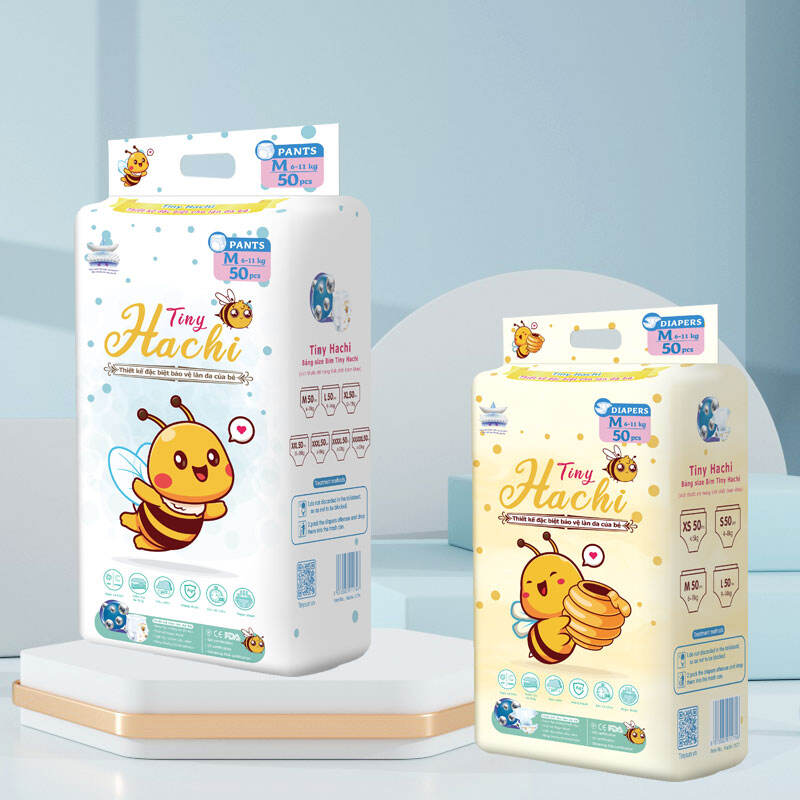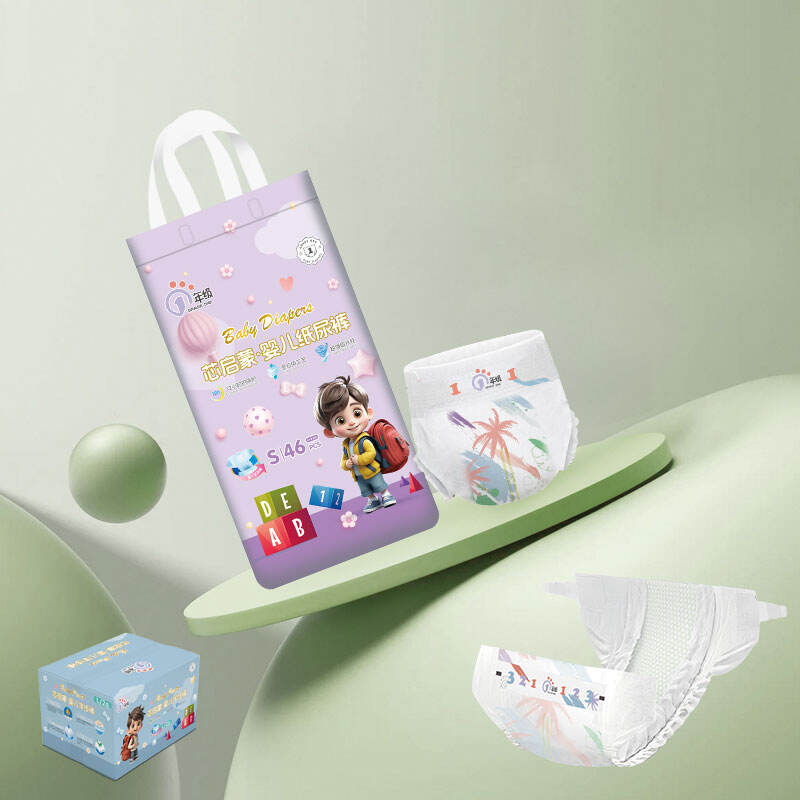Omnichannel Strategies: How E-Commerce is Transforming Diaper Sales
The Impact of E-Commerce on Diaper Marketing
E-commerce has revolutionized diaper marketing by providing direct-to-consumer channels and enabling customized shopping experiences. This transformation allows brands to bypass traditional retail bottlenecks, directly engaging with consumers and offering personalized shopping experiences. Such strategies enhance customer loyalty and brand recognition, crucial in today's competitive market.
The numbers back it up the growth of online diaper sales has been pretty impressive lately, especially through e-commerce platforms. Take a look at what happened in the diaper market just recently there was more than a 15% jump in people buying diapers online over the past few years. This isn't just about parents getting used to shopping differently; it shows how well the whole industry has caught on to digital shopping trends. Companies are adapting fast to meet these new expectations from consumers who want convenience without leaving their homes.
Getting omnichannel strategies right matters a lot when it comes to reaching customers where they actually are. The best approaches blend what happens online with what happens in stores, so people get the same good experience no matter how they interact with a brand. Take coffee shops as an example many now let customers order through apps while still maintaining those cozy in-person interactions at the counter. When companies use both their websites and brick-and-mortar locations effectively, they tend to keep customers coming back more often. Sales numbers usually go up too, which explains why so many businesses are investing heavily in these hybrid models these days.
The Rise of Omnichannel Strategies in Diaper Marketing
In today's world of diaper marketing, omnichannel approaches aren't just helpful anymore they're pretty much essential for staying competitive. The main idea behind these strategies is simple enough create shopping experiences that work smoothly no matter which channel customers use. Think about it this way when someone looks at products on their phone during lunch break, then checks prices in store later, or maybe orders online after reading reviews on social media platforms. Good omnichannel planning makes sure all those touchpoints fit together nicely instead of feeling disconnected. For businesses selling baby products especially, getting this right means making life easier for parents who already have plenty on their plates without worrying if their preferred brand will be available wherever they need it most.
Key elements of omnichannel strategies include data integration, a customer-centric approach, technology investment, consistent branding, and measurement and adjustment. To enhance clarity, consider these core elements in an ordered list:
- Data Integration: Unifies customer insights for a seamless experience.
- Customer-Centric Approach: Ensures every touchpoint prioritizes customer needs.
- Technology Investment: Essential for integrating and managing multiple channels.
- Consistent Branding and Messaging: Maintains a cohesive message across platforms.
- Measurement and Adjustment: Continuously improves strategy through performance data.
When companies get these elements right, they see real results like happier customers and better conversion rates at checkout. Take Disney for example they've shown how combining physical parks with online tools and mobile apps creates something special that keeps people coming back. The magic works because everything connects seamlessly. Looking at diapers, brands that go all in on omnichannel approaches tend to build stronger relationships with parents. These companies make shopping easier whether someone prefers clicking from home or grabbing items while running errands. Parents appreciate not having to switch between different systems just to find what they need quickly.
Product Showcase: Best Diaper Options
Understanding the best diaper options for different needs can greatly enhance the comfort and convenience of both children and adults. Here's a look at some top choices:
Tiny Diaper Type / Pants Type
The Tiny Diaper Type or Pants Type is made for babies between 0 and 3 years old and really focuses on keeping them comfortable while staying breathable. These one-size-fits-most diapers come in NB through to XXXL sizes and work great for infants weighing anywhere from birth weight all the way up to about 23 kilograms. What makes these stand out? They can be used pretty much anytime without worrying about timing issues, which has earned them lots of trust among parents who have relied on both the Tiny Hachi and Tiny Tenshi lines before. The soft materials are gentle on delicate baby skin too, so they're becoming increasingly popular with parents who care deeply about their child's health and cleanliness day after day.
YOUDUN Adult Diaper / Pad
Adults who want good protection without sacrificing comfort will find something special in the YOUDUN Adult Diaper/Pad. What makes these pads really work well is their stay dry feature that keeps skin feeling fresh all day long. Available in three different sizes M, L and XL, they fit most body types comfortably for regular daily wear. Many people who have tried them say how comfortable they are despite being so effective at absorbing moisture. That kind of real world feedback matters when looking for reliable support solutions. Part of the OUHU line since forever now, YOUDUN products focus on creating items that nobody needs to be embarrassed about using. They help maintain personal dignity while still getting the job done right across generations of users.
Year Diaper Type
Designed to keep babies comfortable no matter what time of year it is, the Year Diaper Type handles both cold winter nights and hot summer days with ease. Parents will notice the same soft, breathable material found in other models, which helps prevent irritation even during long wear periods for kids between birth and three years old. What sets this one apart is its versatility across different scenarios from everyday use to special outings. Many families find themselves reaching for these diapers again and again because they work just as well during back-to-school shopping rushes as they do on quiet weekend mornings when nobody wants to deal with changing routines. The consistent performance across seasons has made them a go-to option for countless households looking for dependable baby care solutions without constantly switching products based on weather conditions.
Innovative Marketing Strategies for Diaper Brands
The diaper market is getting tougher by the day, so brands need to get smart about using data analytics if they want to stay ahead. Analytics tools let companies see exactly what customers are doing when they shop for baby products. They find out things like what time of year people buy more diapers, which sizes sell best, and even what packaging designs catch attention. Take disposable diapers for example – data might show that working moms in urban areas prefer overnight options while families in rural areas go for economy packs. Brands that spot these trends early can adjust their ads and promotions accordingly. The real money comes from knowing where to put resources instead of wasting them everywhere. Companies that understand their audience through good data analysis end up spending less overall but connecting better with customers, which means more babies get changed and more profits roll in.
When it comes to reaching more people, combining social media with online shopping strategies really makes a difference for diaper companies. Take Instagram and Facebook for instance these platforms let brands connect directly with their target market, especially new moms who spend hours scrolling through feeds daily. The best marketing efforts tend to use things like temporary posts and live videos to show off how good their products actually work. One company did something pretty cool on Facebook last year they asked customers to share photos of their babies using the diapers, then featured those real life moments across their page. This approach not only made folks feel heard but also boosted sales numbers significantly. Putting social networks together with online stores helps create shopping experiences that actually grab attention and turn window shoppers into paying customers most of the time at least.
Challenges and Solutions in Diaper Marketing
Marketing diapers presents quite a few hurdles since parents tend to care so much about three main things quality, comfort, and what's in their wallet. Latest research shows something interesting too most parents (like 8 out of 10) really look at how well a diaper absorbs and whether it won't irritate baby's skin. So if companies want to stand out, they need to highlight those features front and center. Price still matters a lot though. About half the people shopping for diapers compare prices across different brands before making a decision. That means manufacturers face this tricky situation where they need to keep costs down but can't cut corners on what makes diapers actually work for babies and parents alike.
The diaper market online is really tough these days, so brands need to get creative with how they market themselves. Targeted ads actually work pretty well when they speak directly to what different parents want at various stages. Some companies are doing great by understanding their customers better. For instance, those offering tailored shopping suggestions based on past purchases or making returns super easy without all the paperwork? Those tend to catch people's attention. When shoppers feel like their experience goes smoothly from start to finish, they're happier overall and more likely to stick with a brand long term despite all the competition around them.
Key Takeaways for Future Diaper Marketing Strategies
Brand loyalty matters a lot for diaper marketing going forward, and companies have found ways to build it through various engagement methods including loyalty schemes and getting involved in communities. These loyalty programs work because they give people something back when they keep buying products again and again. Take the common "buy 10, get 1 free" deal many brands offer these days. Parents tend to stick around when they know their spending adds up to something tangible at the end. On the other side of things, brands that sponsor local events or support charitable causes create deeper connections with families who shop for diapers. When parents see their favorite brand helping out in town or supporting good causes, it builds that extra layer of trust that makes them feel good about continuing to buy from that company instead of switching to competitors.
More and more people are looking for products that actually care about the planet and include everyone in their messaging. Brands wanting to keep up need to do things like swap out plastics for greener alternatives or show real diversity when they advertise. Take baby diapers for instance some companies have started incorporating plant based materials that break down naturally after use. This change appeals directly to parents who worry about landfills getting overloaded with waste from disposable products. When ads feature different types of families including single parents, same sex couples, or multigenerational households, it makes folks feel seen and understood. These kinds of changes don't just check boxes they create genuine connections between brands and customers across all walks of life. In today's crowded marketplace where every company claims to be green or inclusive, actually following through on those promises helps stand out from competitors still stuck in old ways.





